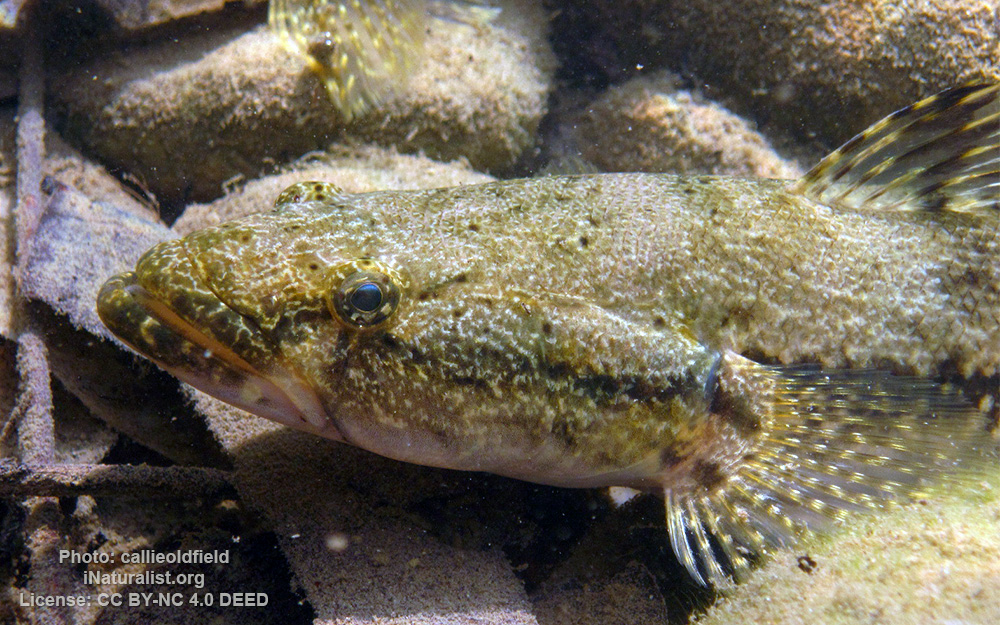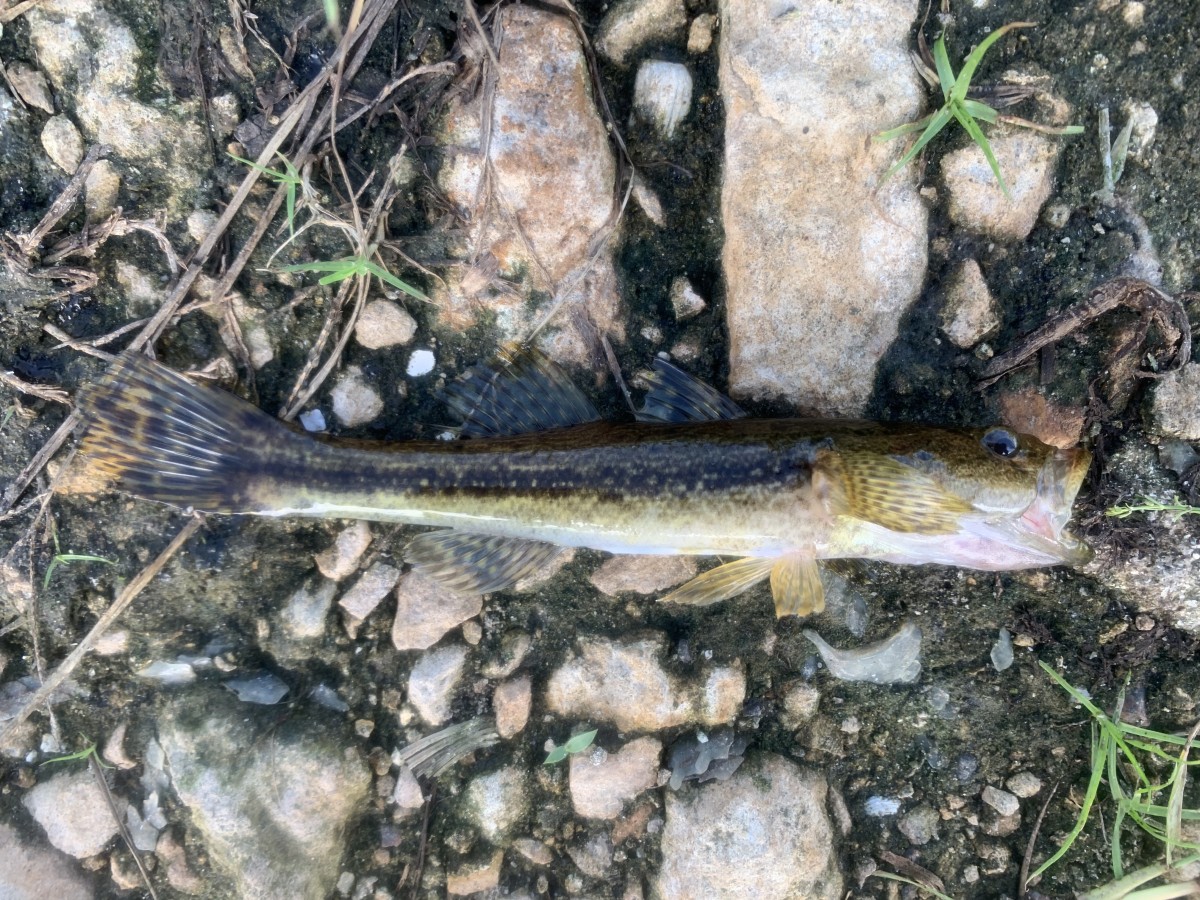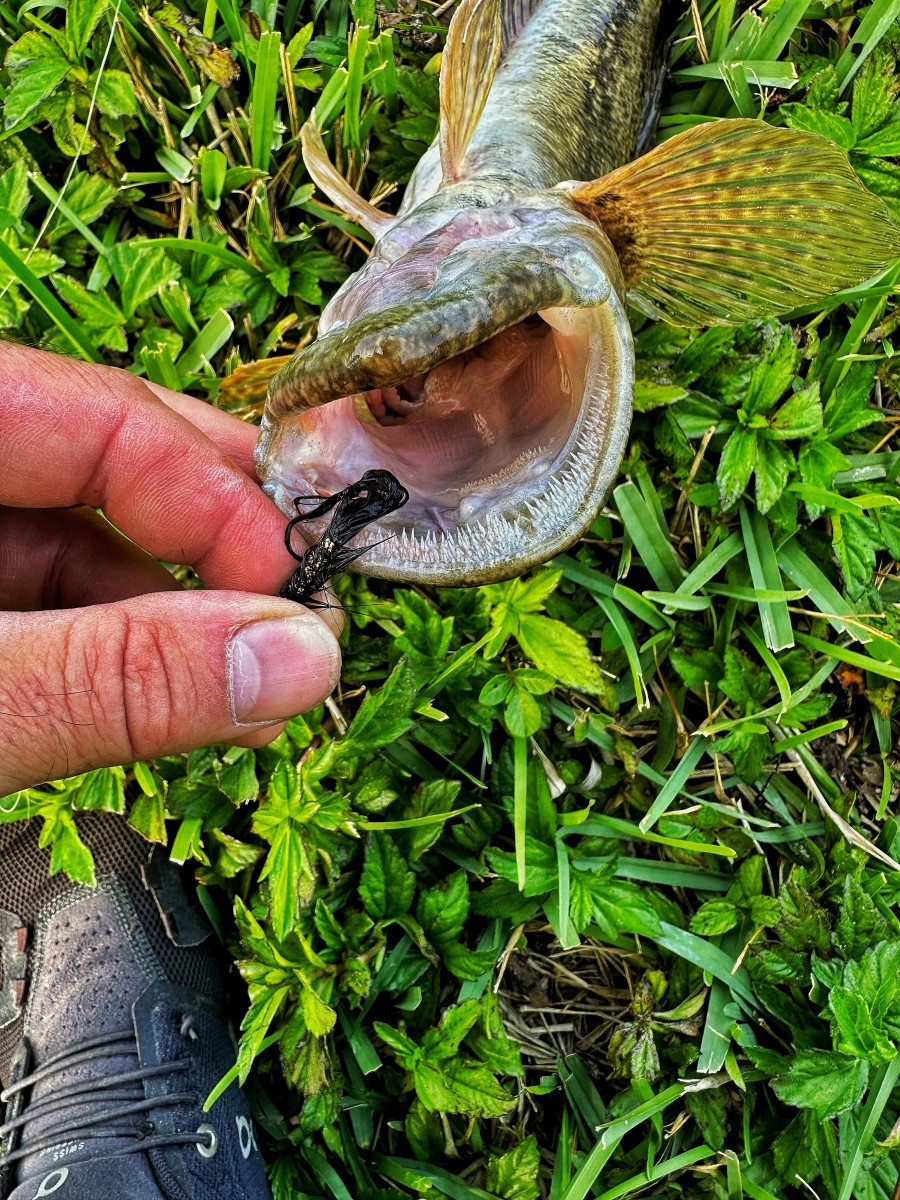Bigmouth sleeper
(Gobiomorus dormitor)

Classification
General data
The Bigmouth Sleeper has an elongated cylindrical stout body that tapers toward the rear. They are dark brown to olive brown dorsally transitioning to tan to tan with yellow tints ventrally. They have several faint dark stripes on the gill cover, an oblique black bar across the rear half of the first dorsal fin and rows of spots on the caudal and second dorsal fins.
Juveniles are more intensely colored than adults with a black stripe that runs from the snout through the eyes to the base of the caudal fin; their tail base has 3 black spots.
Their head is broad and elongated with a blunt snout with a conical profile that is depressed above with small beady eyes on top with a large mouth with a projecting lower jaw that is equipped with several rows of small conical teeth on the jaws and the front of the roof of the mouth.
Their anal fin has 1 spine and 8 to 10 rays; their caudal fin is broad and rounded; their first dorsal fin has 6 weak spines; their second dorsal fin has 1 spine and 9 rays; their pectoral fins have 16 or 17 rays and are broad and fan-like; and, their pelvic fins have 1 spine and 5 rays and are widely separated at the point of attachment. They have 14 to 17 gill rakers. Their body is covered with rough scales; their head has smooth scales. They do not have a lateral line.
The Bigmouth Sleeper is a demersal species found in clear freshwater rivers, often far upstream, over sand substrate within the current near cover in water temperature between 22C (72F) and 29C (84F) at elevations below 300 m (1,000 feet) at depths up to 5 m (16 feet).
Their juveniles are found in shallow estuaries and brackish waters with salt levels between 0 and 13 ppt.
They have the ability to move over land short distances.
They reach a maximum of 90 cm (2 feet 11 inches) in length and 7.5 kg (16 lbs 8 oz).
As of March 31, 2022, the International Game Fish Association world record stood at 2.03 kg (4 lbs 7 oz) with the fish caught in coastal waters off Costa Rica in March 2001. The adults are ambush predators that feed on small river shrimps and small fishes including cichlid fry. The juveniles consume insects. They rely on their cryptic coloration for both feeding and to avoid predation.
The Bigmouth Sleeper is found in all Mexican freshwater systems at elevations up to 300 m (1,000 feet) that drain into the Atlantic Ocean. They are more common in the tributaries the drain into the Southern Gulf of Mexico.














